China features ancient history, stunning architecture, and glorious natural landscapes. This country is home to some of the most well-known and beloved architectural wonders, and it warrants much attention due to its rapid technological development. Between its unique, ancient traditions and its cutting-edge technology, China is an interesting and complex country. Whether you’re looking for tasty cuisine or historic art, you’ll be sure to discover what you desire in China. There are so many fun and unique things to learn about China, including its history and culture. Let’s explore 10 mind-blowingly fun facts about China you won’t believe.
1. The Great Wall of China: Can You See it From Space?
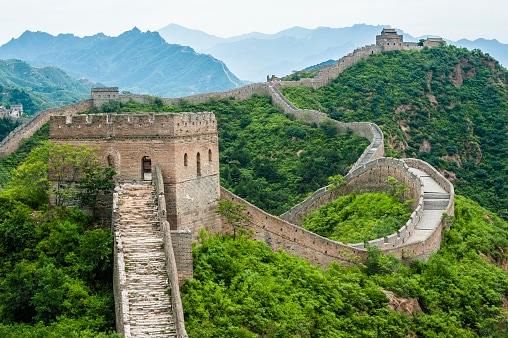
The Great Wall of China is actually a collection of walls.
©axz66/iStock via Getty Images
Built between the 3rd century BC and the 17th century AD, the Great Wall is one of the most recognizable symbols of Chinese culture and history. The Great Wall is one of the seven Wonders of the World. The Chinese constructed the wall to prevent certain nomadic groups from entering the region.
There’s a great deal of debate on whether the Great Wall is visible from space. Some say it can be seen from space or the moon. However, astronauts have disproved this theory. The Great Wall is nearly 13,000 miles long, but the materials make it tricky to see from such a great distance. According to NASA, you need additional aid to see the Great Wall from space.
2. Largest Population of Buddhists
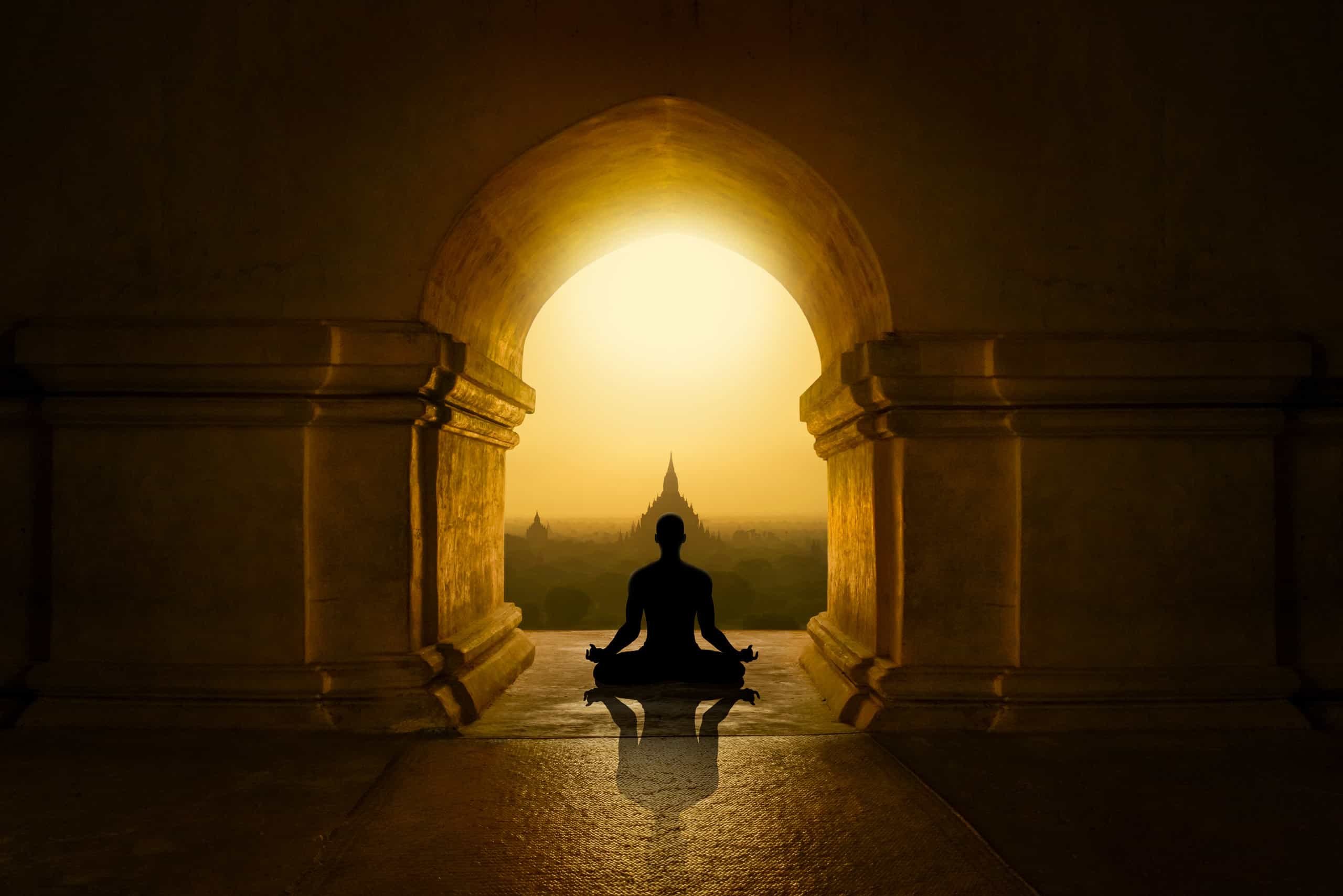
China’s practicing Buddhists are different from Chinese people who believe in Buddha.
©Teo Tarras/Shutterstock.com
The largest population of Buddhists is located in China. The country contained over 245 million Buddhists, nearly 18% of the national population. However, because the faith tradition overlaps with other Chinese religious practices, it can be hard to fully assess the size of the Buddhist population. You can see China’s Buddhist heritage reflected in the various temples and monasteries throughout the country.
3. China is the Most Populous Country
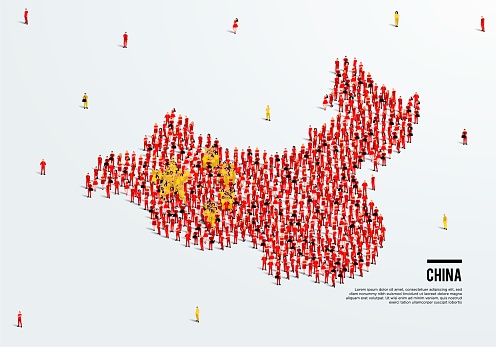
China’s population surpasses India and the United States.
©Jelina Preethi/iStock via Getty Images
As of July 2023, China is home to 1,413,142,846 people. About 65% of China’s 1.4 billion people are located in the urban regions of Shanghai, Beijing, and Guangzhou. There are approximately 393 people per mile. Although the country’s population is the largest in the world, the country is facing a dilemma when it comes to aging and gender. China’s population will likely drop as a result of aging, with India taking over as the most populous country.
4. Birthplace of Tea

The Chinese attribute healing powers to tea.
©svf74/Shutterstock.com
You can trace the origin of tea back to China, where locals call it te or cha. Emperor Shen Nung supposedly discovered tea in 2737 BC. According to legend, the emperor was sitting beneath a tea tree with a cup of hot water. The wind jostled some tea leaves, which landed in the cup. The emperor took a sip, and the rest was history. As a lover of herbs and herbal remedies, he requested the addition of Chinese tea gardens. Today, tea is widely enjoyed, and it is no longer solely used for its medicinal properties.
5. The Forbidden City was the Chinese Imperial Palace

The Forbidden City was constructed around 1406 by Ming emperor Zhu Di.
©06photo/iStock via Getty Images
Located in the heart of Beijing, the Forbidden City is a UNESCO World Heritage Site known for its intricate architecture and 9,000 rooms. It is one of the oldest and grandest imperial palaces across the globe, having been constructed sometime between 1406-1420. The Forbidden City was the location of Chinese powers for nearly five centuries. The imperial palaces became museums after the Qing dynasty collapsed.
6. World’s Longest High-Speed Railway

China’s high-speed line opened in December 2012, and it has reduced trips to eight hours.
©onlyyouqj/iStock via Getty Images
China is home to six of the 10 longest high-speed railways in the world. The other four are located in Spain, Japan, Russia, and the U.K. China’s railway system is one of the most extensive in the world, covering 22,000 miles. The trains travel up to 200 mph, and each train set has approximately 16 cars. The high-speed railway system connects China’s major cities and assists with transporting goods.
7. The Four Great Inventions of Ancient China

Paper is one of China’s great inventions.
©simplytheyu/iStock via Getty Images
China is responsible for a number of great inventions that helped with global technological advancement. In fact, China was one of the world’s greatest inventors from 1st century BC to 15th century AD. Chinese inventions include paper, printing, gunpowder, the compass, the suspension bridge, the wheelbarrow, and the rudder. All of these ancient Chinese items have made significant contributions to the world.
8. Farmers Discovered the Terracotta Warriors
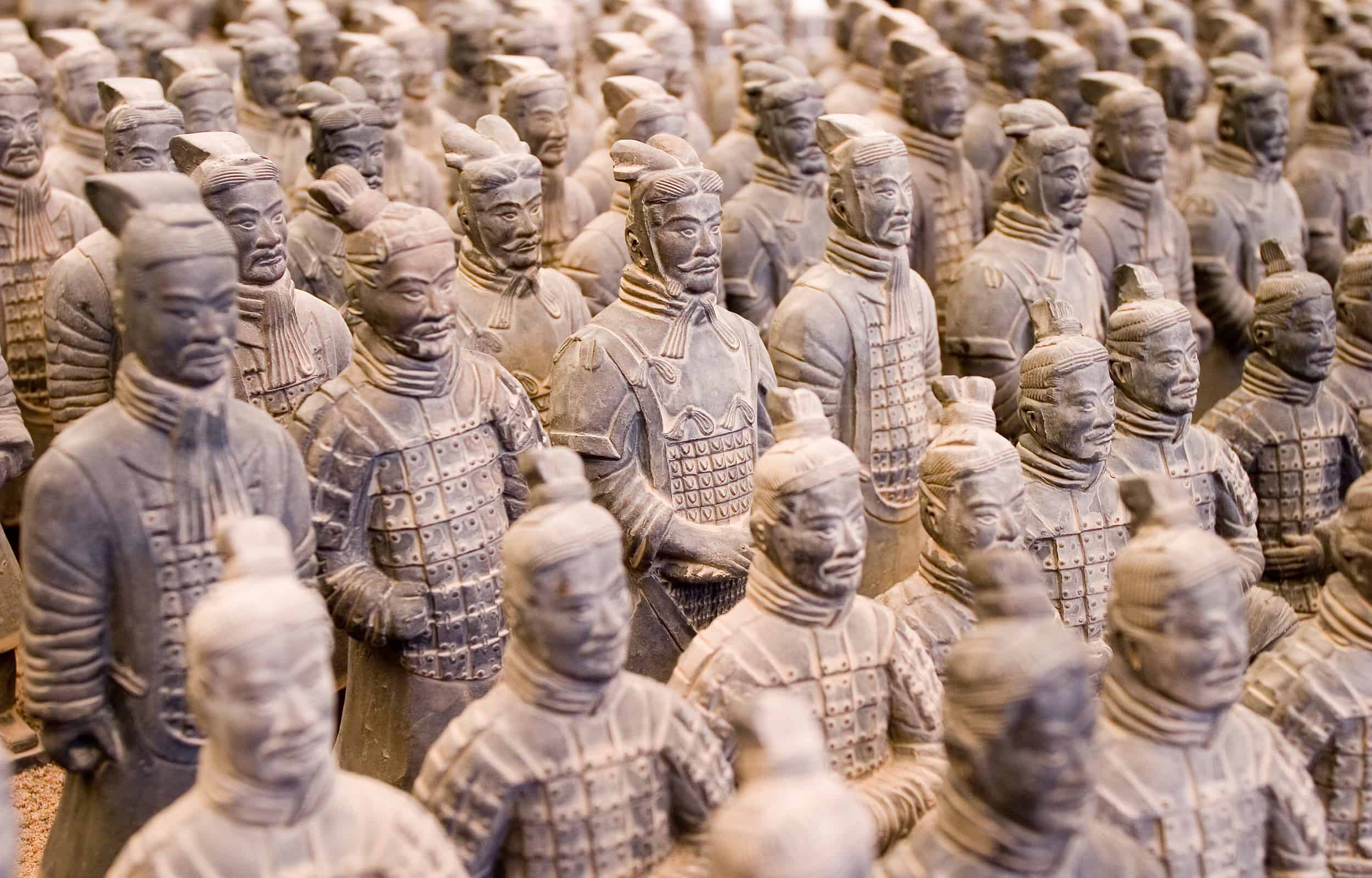
These figures were discovered by accident. No historical record of the Terracotta Army exists.
©BartZuidema/iStock via Getty Images
The Terracotta Army is a collection of sculpted figures that portray the Qin Shi Huang armies. Qin Shi Huang was the first emperor of China, and the figures date back to around 200 BC. The terracotta figures range in shape and size, and include warriors, chariots, and horses. It’s estimated that it probably took nearly 30 years for the figures to be completed. When Emperor Qin Shi Huang died, the figures were buried with him.
Farmers found the terracotta figures in 1974. At that point, the figures had been in place for at least two centuries. Today, you can visit the Terracotta Army Museum, which houses the nearly 2,000-year-old figures. The exhibit takes about four hours to navigate, and there are approximately four different pits to explore.
9. Longest Traffic Jam in History

The traffic jam started when a number of large trucks attempted to enter the expressway.
©chuyu/iStock via Getty Images
On August 14, 2010, Beijing experienced the longest traffic jam in history. It lasted 12 days. The gridlock happened on the Beijing-Tibet Expressway. Thousands of vehicles sat on the roadway, which spanned 60 miles. The jam resulted from a number of heavy-duty trucks and several accidents, which inevitably halted movement on the expressway.
10. The Yangtze River is the Longest River in Asia
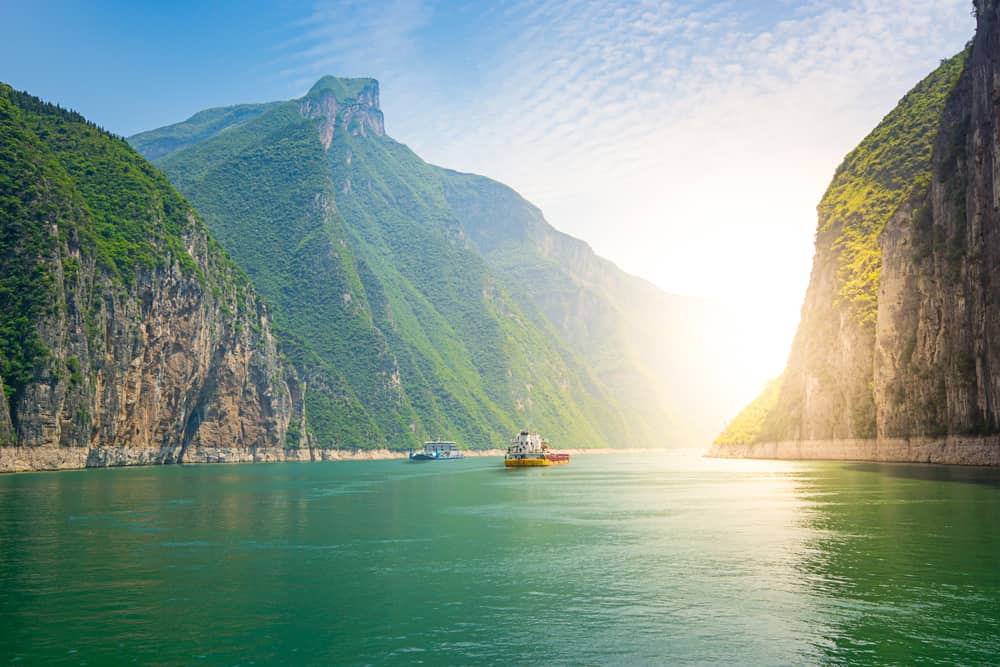
Don’t forget to take a cruise down the Yangtze River.
©Daniel Doerfler/Shutterstock.com
In Chinese, the Yangtze River, also referred to as the Chang Jiang, translates to ‘long river.’ This river is the third longest in the world, and it is one of the most beautiful bodies of water to encounter in China. The Yangtze River is 3,915 miles long, and it has eight primary tributaries.
The photo featured at the top of this post is © gyn9037/Shutterstock.com
Thank you for reading! Have some feedback for us? Contact the AZ Animals editorial team.







